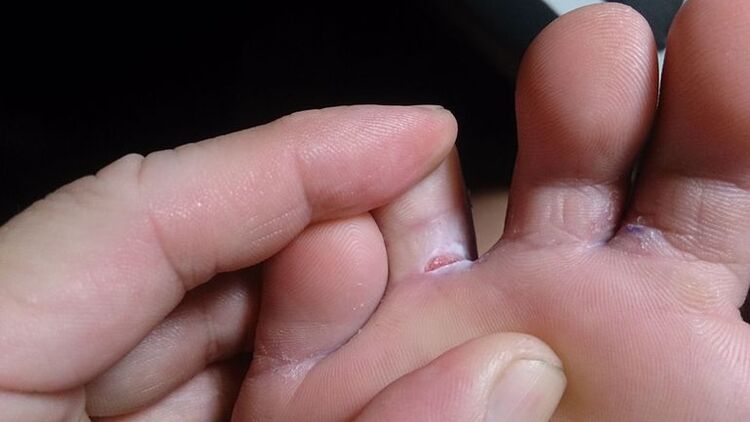
Mycoses are a group of diseases caused by pathogenic fungi.The skin areas that affect these microorganisms are called dermatomycosis.Sometimes they are combined with onychomycosis - nail disease.Knowing what the fungus looks like, you can cure the disease in a timely manner and prevent complications.There are several options for the course of this pathology.
The mechanism of infection of the foot
There are factors that directly affect the ability to become infected with a fungus.Also, a lot in this regard depends on the state of immunity.When the body's defenses are reduced, the likelihood of developing mycoses increases significantly.Immunity can weaken chronic infectious diseases, pathologies of the endocrine system.You can get infected with a sponge in a straight and indirect way.In the first case, this happens through:
- soil layers;
- different plants;
- Contact with an infected person or animal.
The indirect path involves the use of hygiene and other things that the patient is actively using.
Candida mushrooms live on the surface of the epidermis.When the composition of the secreted sweat glands changes, a nutrient environment for the development of microorganisms is formed.Representatives of the Candida group acquire pathogenic properties.This means that they can easily cause diseases.
Mycosis classification

With the athlete's legs, the skin and nails are affected.You can get infected with this disease in public places: in gyms, saunas.By what objects is the most often transmitted by the pathogen?
- towels;
- cloth;
- oil plates;
- Mattles.
Men in adulthood suffer from the feet of the athlete more often.A factor for the development of the disease is an increase in sweating.
Trichophytosis can be caused by different types of mushrooms in the trichophyton group.The disease is considered to be highly contagious.It is transmitted through shoes worn by an infected object, towel, towels and other bathroom accessories.Pathology is more common in children.The distribution is approximately 17% in adolescents.Young men usually suffer.Among the elderly men, the frequency is even greater.Workers in workshops, bathrooms, showers, athletes and miners are at risk.
Candidiasis of the legs, compared to the athlete's leg, is more common.Most Candida mushrooms belong to the group of opportunistic pathogens.This means that these microorganisms are present on the human epidermis in a normal version.They acquire pathogenic properties after a decrease in immunity.
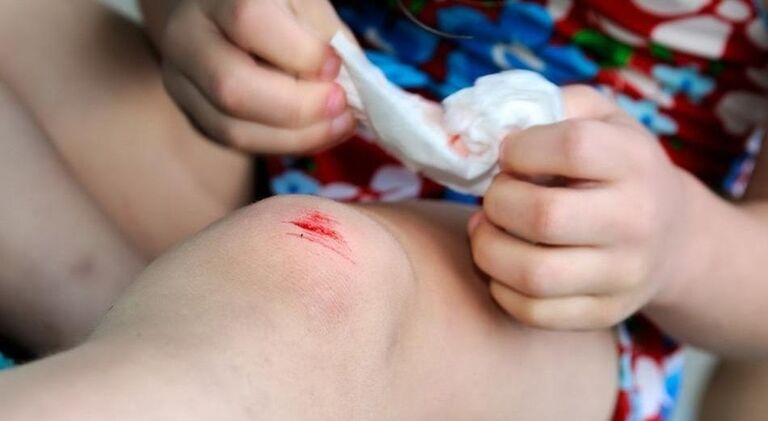
In order for Candida mushrooms to enter the body, it is sufficient to use objects belonging to the patient.These microorganisms are often present in foods such as meat, milk and dairy products.The risk of infection increases in the presence of such factors:
- Skin injuries due to exposure to chemical components, alkali and acids;
- maceration, sweating of the skin;
- The presence of a fungus in the air in large quantities.
Symptoms of the disease
By the nature of the course, rubamicosis and epidermophitosis are similar.For this reason, experts combine them into one category - Mikoza Stop.It is distinguished by its flaky, brew and integrigianosis of its forms.A separate group is onychomycosis that can be:
- atrophic;
- normotrophic;
- Hypertrophic.
In breathing mycosis, sweat glands are inhibited.The fungus of the inter -trigonic shape looks like a diaper rash.Despite such division, it should often be considered conditional as different variations of the disease are combined.
Flat -and -grain and grace
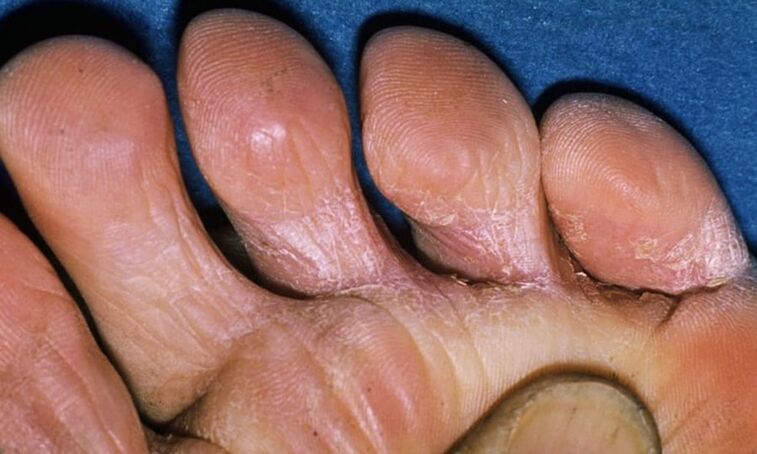
Initially, the squamous form of the fungi affects one side.Then it goes to the opposite.The redness areas are formed on the skin, which gradually begin to peel off.Individual patients complain of itching.The area of damage can be large and small, depending on the patient's body.There are people who suffer from this form of mycosis on their feet, but nothing bothers them.
The fungus on the skin of the feet with a grain -shaped shape looks special: the bubbles are formed with a diameter of 2 to 8 mm in large quantities, formed on the arch of the foot.Little by little, they begin to merge into larger formations and then descend.In their place, ulcerative skin lesions are formed.Sometimes the process goes to the inner and outer side surfaces.The bubbles open and in their place you can see areas of diaper rash with erosion.
The fungus of the legs also manifest in itching and soreness.Erosion is dry in the future and heals, and peeling is formed in their place.The fungal infection can be complicated by bacterial.In this case, the liquid located inside the bubbles becomes cloudy.The skin of the feet swells, blushes.The breathing form is characterized by a long flow.Remission periods alternate with exacerbations.Usually the fungus of this shape affects only one leg.
Intrigue
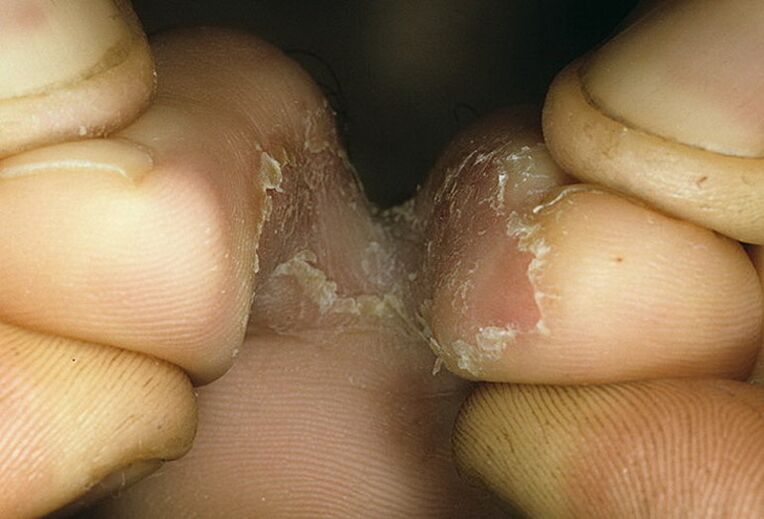
It has become the broker widespread and arises independently.This form develops more often against the background of squamous cell mycosis.The process affects the area between the 4th and 5th feet of the foot.The key symptom is the appearance of cracks on the epidermis with a whitish edge.The surface layers of the skin are exfoliated.Weight loss is formed between the fingers.The patient complains of burning and itching.In areas of lesions, quite painful for touching the erosion form.
The intrigued form is chronic in most cases, has a long flow.The condition improves in the cold season and sharpens in the summer.In patients with this form, the skin loosens over time.Its protective functions are reduced.This creates a favorable basis for streptococcal infection.Abscesses are formed on the epidermis, which are surrounded by areas of swelling and redness.
Species of onychomycosis
This disease leads to damage to the nails on the fingers.The pathogen initially attacks the free edges of the plate.Here, stripes and spots of a yellow hue are formed.Several forms of onychomycosis are distinguished:
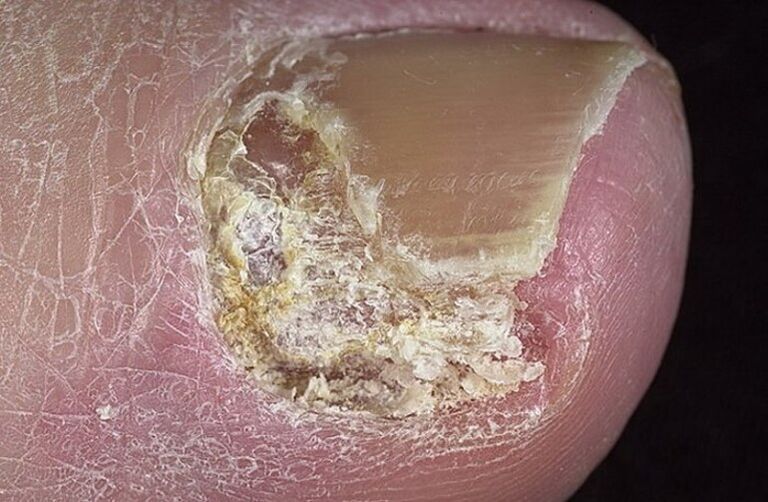
- Hypertrophic.The nail is yellow, its thickness increases.It breaks down, and the skin underneath it peels off and thickens.
- Atrophic.There is an opposite situation when the nail becomes thin and destroyed.The skin below it is covered with a keratinized layer.
- Caused by forms.It is formed against the background of other types of nail disease.The plate can be green, yellow, brown, and sometimes even black.Paronichia is formed in the space of periologe - purulent inflammation.
In 70% of cases, onychomycosis affects 3, 4 and 5 toes.In 30% of cases, 1 and 4 fingers suffer.Quite often, the normotrophic form of the disease is found when yellow spots are present on the nail, but its integrity is not disturbed.
Fungus treatment
There are various regimens for the treatment of the disease that are selected individually by a doctor.
Additional treatments include the intake of disabilities and vitamins.They help to boost immunity.If a bacterial infection has joined, antibiotics are prescribed.Sometimes the onset of a fungal infection is favored by the underlying disease.It must be treated first.We are talking about dermatological pathologies and chronic infections.Antihistamines are recommended in the presence of an allergic component.
Traditional medicine
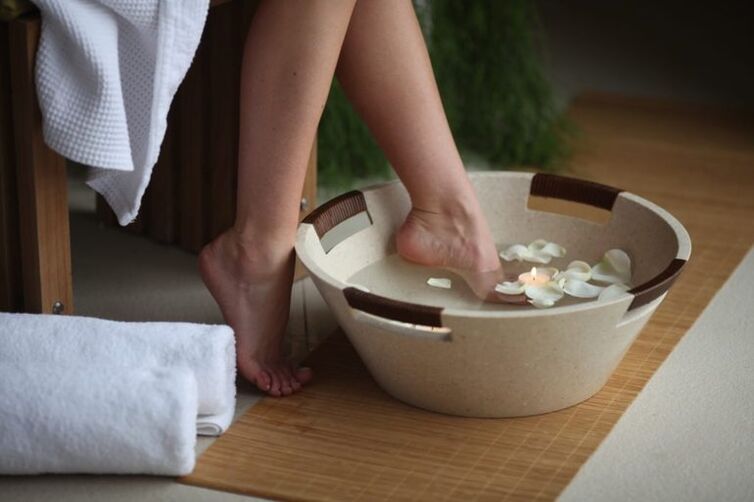
Mycoses do not pose a significant health hazard.But their presence helps to reduce immunity, acts as a focus of inflammation.Only antifungal therapy with the help of specialized drugs helps to get rid of such a problem.In the early stages, it is allowed to use folk recipes, which are supplemented by basic therapy.What methods can be practiced:
- Reception of baths;
- treatment of affected areas with a decoction of medicinal herbs;
- Ointment application.
For baths you can take wine vinegar as it has an antiseptic effect.First you need to wash your feet with warm water and dry them.The wine vinegar is then poured into the water in a ratio of 1 to 2 and the legs are descended into it.They hold them there for 5 minutes, then put socks for night and go to bed.
Another version of the bathroom involves the use of soda and salt.Take a tablespoon of both ingredients and dissolve in water.Then lower your feet into the solution, hold for no more than 15 minutes.At the end of the procedure the legs are washed with warm water.
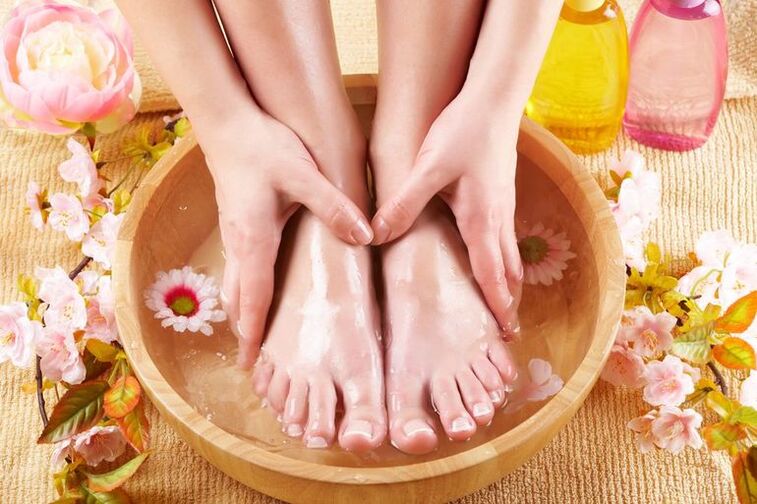
In order to treat the feet with therapeutic decoctions, the medicinal verbena and inflorescences of the calendula can be used.Also, oak bark, dried blackberries have a good antiseptic effect.The selected components are mixed in the same amount.3 Tbsp.l.And pour a glass of water.Put low heat for 15 minutes.Filter and moisten the decoction lesion with the resulting decoction.This tool can also be used for lotions.
To prepare the healing ointment, they are mixed in the same amount of pork fat and sifted wooden ash.The resulting ointment should be thick and have a homogeneous consistency.It is used for cleaning and dry legs twice a day: morning and evening.


























